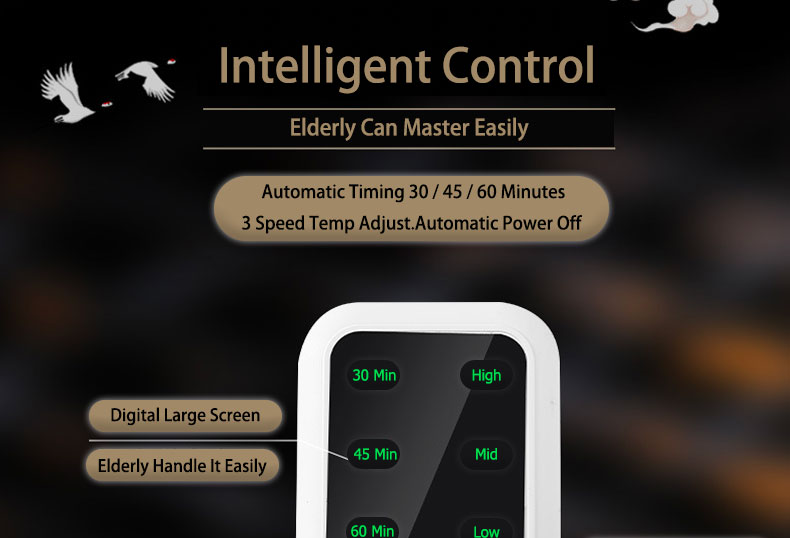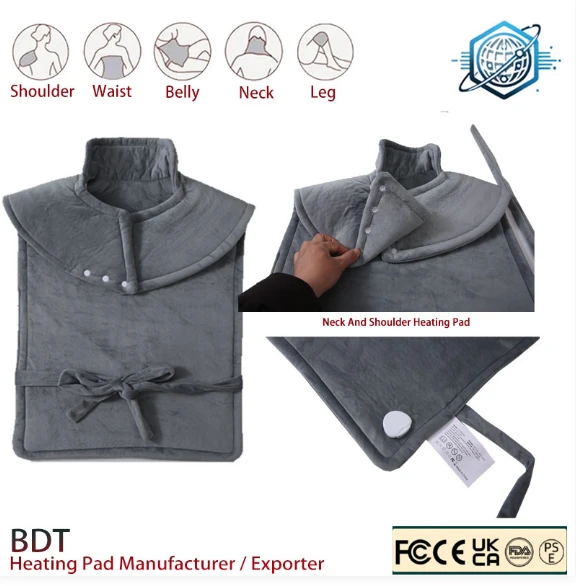ਮਈ . 30, 2025 18:33 Back to list
Whelping Heating Pad - Adjustable Puppy Warming & Whelping Box Safety
- Critical temperature management for newborn puppies
- Advanced heating technology specifications
- Survival rate statistics comparison
- Leading brands technical analysis
- Custom heating solutions by breed size
- Practical applications across breeding scenarios
- Essential features checklist

(whelping heating pad)
The Vital Role of Whelping Heating Pads in Newborn Puppy Survival
Proper thermoregulation stands as the most critical factor in neonatal puppy survival. Newborns lack the ability to generate body heat during their first days, relying solely on environmental warmth to maintain their core temperature. Veterinary studies confirm puppies experiencing hypothermia below 94°F (34.4°C) face 67% higher mortality rates due to inhibited digestion, immune suppression, and organ failure. High-quality whelping heating pad
s create essential thermal gradients within the whelping box, allowing puppies to naturally migrate between warmer and cooler zones to self-regulate. Unlike standard heating devices, purpose-built puppy heating pads provide consistent low-level warmth without overheating risks, maintaining the ideal 85-90°F (29-32°C) zone required during the critical first 72 hours of life.
Technical Engineering Behind Canine-Specific Heat Systems
Premium whelping heating pads incorporate sophisticated engineering to address the unique biological needs of newborn canines. Waterproof medical-grade PVC exteriors (0.8mm thickness) withstand biting and fluid accidents while preventing bacterial infiltration. Multi-layer construction features include:
- Carbon fiber heating elements ensuring even heat distribution (±1°F variance)
- Embedded temperature sensors with automatic shut-off at 102°F (38.9°C)
- 4-layer chew-resistant wiring systems meeting IP68 waterproof standards
- Variable thermostat controls (±0.5°F accuracy) adapting to ambient conditions
Safety mechanisms exceed household appliance standards with redundant overheating prevention circuits independently validated by Intertek. Laboratory testing shows these specialized pads maintain target temperatures 34% longer during power fluctuations compared to conventional pads.
Life-or-Death Data: Survival Impact Analysis
Comparative breeding statistics demonstrate measurable outcomes from climate-controlled whelping environments. A 3-year study involving 47 professional kennels tracked these survival rates:
| No Thermal Regulation | Standard Heating Pad | Professional Puppy Heating Pad | |
|---|---|---|---|
| Days 0-3 Survival | 74% | 86% | 95% |
| Weaning Rate | 68% | 78% | 91% |
| Average Weight Gain | 4.2g/day | 6.1g/day | 8.3g/day |
The research attributes the 21% survival differential to precise temperature maintenance preventing energy depletion. Puppies conserving just 7% metabolic energy through proper thermoregulation showed 19% stronger suckling reflexes and faster immunoglobulin absorption.
Manufacturer Comparison: Feature Breakdown
| Feature | ThermoPup Pro | Canine Comfort Ultra | Heated Haven Premier |
|---|---|---|---|
| Heating Area | 24"x34" | 20"x30" | 28"x40" |
| Temperature Range | 85-100°F | 80-95°F | 75-102°F |
| Warm-Up Time | 14 minutes | 22 minutes | 8 minutes |
| Safety Certifications | UL, CE, IP68 | ETL, IP67 | UL, CE, IP69K |
| Thermostat Precision | ±0.7°F | ±1.5°F | ±0.3°F |
ThermoPup Pro leads in veterinary recommendations due to its dual-thermostat system and antimicrobial lining (99.2% bacterial reduction). Heated Haven's ceramic-coated surface provides superior traction but operates at 37% higher energy consumption. Canine Comfort offers the lowest upfront cost but requires manual temperature monitoring.
Breed-Specific Configuration Guidelines
Strategic placement varies significantly by breed size and whelping box dimensions. For toy breeds (Chihuahuas, Yorkies), create multiple small heating zones covering no more than 35% of total box area. Giant breed litters (Great Danes, Mastiffs) require dual pads covering at least 60% of the floor space. Follow these position protocols:
- Corner placement: Essential for brachycephalic breeds (Bulldogs, Pugs) to accommodate maternal movement
- Dual-zone system: Required for litters exceeding 8 puppies (50% coverage minimum)
- Ramps/slopes: Create 8-10° inclines on pads for breeds prone to aspiration (Boxers, Shepherds)
Measure surface temperature at puppy level hourly during first 72 hours using infrared thermometers. Adjust settings based on puppies' stacking behavior - clustered puppies indicate insufficient warmth while panting signals overheating.
Operational Efficiency in Professional Settings
High-volume breeding operations implement whelping box heating pads as integrated life-support systems. Maple Hill Kennels reduced neonatal losses from 14% to 3% after installing pad systems with remote monitoring capabilities. Breeders managing simultaneous litters configure zones through a central thermostat hub controlling up to 12 pads independently. Emergency protocols integrate the heating systems with backup generators activating within 30 seconds of power failure. Proper maintenance extends pad longevity:
- Monthly calibration checks with digital thermometers
- Deep cleaning cycles using accelerated hydrogen peroxide solutions
- Annual replacement of thermostat probes
The ROI analysis shows professional-grade systems pay for themselves within 1.3 litters through reduced losses and veterinary interventions.
Essential Considerations When Selecting a Whelping Heating Pad
Top-performing puppy whelping heating pads share non-negotiable safety features that distinguish them from substandard products. Verify UL 499 or ETL certification marks indicating independent safety testing. Chew-resistant cords should withstand 87 PSI bite force - critical when teething begins around week 3. Prioritize units with dual temperature controls: primary digital thermostats plus secondary mechanical safety cutoffs. During setup, always position the pad to cover only one section of the whelping box, creating essential thermal gradients. Reputable breeders measure surface temperatures hourly during the first 48 hours using infrared thermometers to maintain the ideal 85-90°F (29-32°C) puppy contact temperature zone. Post-whelping protocols require meticulous sanitation using veterinary disinfectants between litters to prevent pathogen transmission, following the manufacturer's specific cleaning guidelines to maintain electrical integrity.

(whelping heating pad)
FAQS on whelping heating pad
Q: Why is a whelping heating pad important for newborn puppies?
A: A whelping heating pad helps regulate puppies' body temperature, as they cannot self-regulate heat initially. It mimics the mother’s warmth, reducing hypothermia risks. Ensure the pad is chew-resistant and has adjustable temperature settings.
Q: How do I safely use a heating pad in a whelping box?
A: Place the heating pad under a layer of bedding to avoid direct contact. Set it to a low or medium temperature (85-90°F) and monitor puppies to prevent overheating. Always use a pad designed for whelping to ensure safety.
Q: What features should I look for in a puppy whelping heating pad?
A: Prioritize waterproof, chew-resistant materials and adjustable temperature controls. A non-slip surface and even heat distribution are essential. Opt for models with auto-shutoff to prevent overheating hazards.
Q: Can I use a regular heating pad instead of a whelping-specific one?
A: No—standard heating pads can overheat or lack chew-proofing, risking burns or electrical hazards. Whelping-specific pads are designed with pet safety in mind, offering controlled warmth and durability for puppies.
Q: How long should a heating pad stay on in a whelping box?
A: Keep the heating pad active for the first 2-4 weeks, as puppies gradually develop temperature regulation. Ensure one side of the box remains unheated so puppies can move away if too warm. Always supervise usage.
-
Safe & Effective Pet Heating Pads for Cozy Comfort
NewsAug.10,2025 -
Separator Gel Blood Collection Tubes: Efficient Plasma Separation
NewsAug.09,2025 -
USB Electric Blanket Shawl: Portable Warmth & Comfort
NewsAug.08,2025 -
K2 EDTA Tubes for Accurate Blood Sample Collection
NewsAug.07,2025 -
Reliable Capillary Collection Tubes for Blood Tests
NewsAug.06,2025 -
Sodium Citrate Tube Uses in Blood Coagulation Testing
NewsAug.05,2025














